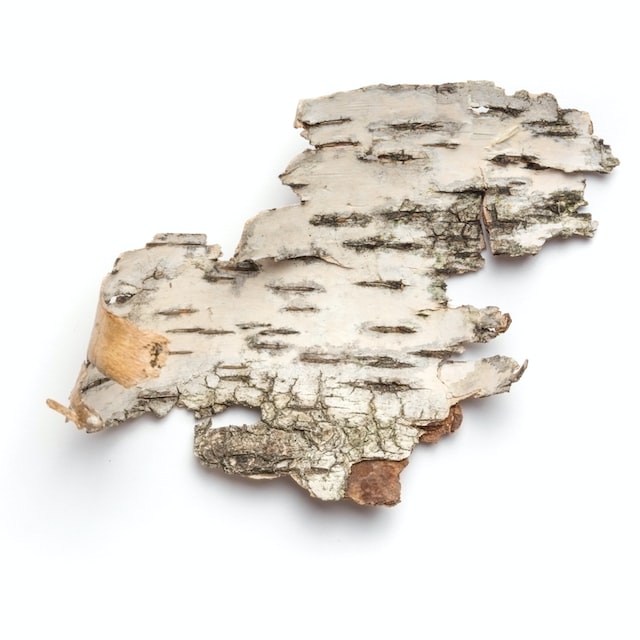Unveiling the Essence of Masculine Birch Fragrance
Birch: A Fragrant and Versatile Wonder of Nature in Perfumes, Therapeutic Oils, Culinary Delights, Medicinal Systems, and Fun Crazy Facts
Birch, with its elegant appearance, soothing fragrance, and diverse applications in perfumes, therapeutic oils, food, traditional medicine, and historical significance, stands as a versatile wonder of nature. This majestic tree, found across various regions of the world, has captured the imagination of cultures and civilizations for centuries. In this comprehensive article, we will explore the enchanting world of birch, examining its role in perfumes, therapeutic oils, culinary delights, traditional medicine, its historical significance, and some fun and crazy facts that make it an extraordinary botanical treasure.
I. Introduction to Birch:
Birch is a deciduous tree belonging to the Betulaceae family, and its scientific name is Betula. The tree is known for its striking white or silver bark, slender branches, and delicate leaves. Birch trees can be found in various parts of the world, including Europe, North America, and Asia, and there are numerous species of birch, each with its unique characteristics.
II. Fragrance in Perfumes:
Birch oil, obtained from the bark of the tree through a process known as steam distillation, is highly valued in the world of perfumery. The oil has a sweet, woody aroma with a hint of smokiness, which adds depth and complexity to fragrance compositions. Birch oil is a popular choice for both masculine and unisex perfumes, as it imparts a sense of strength and sophistication to the scents.
The scent of birch is often associated with the great outdoors, evoking images of serene forests and majestic landscapes. Perfumers often use birch oil as a base or middle note to create earthy and aromatic fragrances that resonate with nature enthusiasts.
III. Therapeutic Oils:
Birch oil is revered in aromatherapy for its therapeutic properties. The oil is known for its analgesic and anti-inflammatory effects, making it a valuable addition to massage oils and balms to alleviate muscular aches and pains. Additionally, birch oil is believed to have antiseptic properties, which can aid in healing wounds and skin conditions.
The fragrance of birch oil is also used in aromatherapy to create a sense of calm and relaxation. Its grounding and comforting scent can help reduce stress and promote a peaceful atmosphere.
IV. Culinary Delights:
Various parts of the birch tree have culinary applications. Birch sap, collected in the early spring when the tree is awakening from its winter slumber, can be used to make birch syrup—a sweet and flavorful alternative to maple syrup. The sap is rich in antioxidants and minerals, making it a nutritious addition to the diet.
In some cultures, young birch leaves are used to add flavor to dishes and herbal teas. The leaves have a mild taste, reminiscent of mint and wintergreen, which lends a refreshing note to culinary creations.
V. Medicinal Uses:
Traditional medicine has long recognized the medicinal properties of birch. In some cultures, birch bark and leaves are used to create poultices or infusions to treat various ailments, including skin conditions, arthritis, and digestive issues. The antibacterial and anti-inflammatory properties of birch make it a valuable herbal remedy in folk medicine.
The wood of the birch tree is also used to make various implements for traditional medicine, such as cups, containers, and even smoke pipes for certain rituals.
VI. Historical Significance:
Birch has played a significant role in the history of various cultures. In ancient times, birch was revered as a sacred tree by the Celts and other European tribes. It was associated with renewal, purification, and the changing of seasons.
Birch bark was used by indigenous people to make canoes, containers, and even shelters. The lightweight and durable properties of birch bark made it a valuable resource for their daily needs.
VII. Fun Crazy Facts:
Birch, with its elegant appearance, soothing fragrance, and diverse applications in perfumes, therapeutic oils, food, traditional medicine, and historical significance, stands as a versatile wonder of nature. This majestic tree, found across various regions of the world, has captured the imagination of cultures and civilizations for centuries. In this comprehensive article, we will explore the enchanting world of birch, examining its role in perfumes, therapeutic oils, culinary delights, traditional medicine, its historical significance, and some fun and crazy facts that make it an extraordinary botanical treasure.
I. Introduction to Birch:
Birch is a deciduous tree belonging to the Betulaceae family, and its scientific name is Betula. The tree is known for its striking white or silver bark, slender branches, and delicate leaves. Birch trees can be found in various parts of the world, including Europe, North America, and Asia, and there are numerous species of birch, each with its unique characteristics.
II. Fragrance in Perfumes:
Birch oil, obtained from the bark of the tree through a process known as steam distillation, is highly valued in the world of perfumery. The oil has a sweet, woody aroma with a hint of smokiness, which adds depth and complexity to fragrance compositions. Birch oil is a popular choice for both masculine and unisex perfumes, as it imparts a sense of strength and sophistication to the scents.
The scent of birch is often associated with the great outdoors, evoking images of serene forests and majestic landscapes. Perfumers often use birch oil as a base or middle note to create earthy and aromatic fragrances that resonate with nature enthusiasts.
III. Therapeutic Oils:
Birch oil is revered in aromatherapy for its therapeutic properties. The oil is known for its analgesic and anti-inflammatory effects, making it a valuable addition to massage oils and balms to alleviate muscular aches and pains. Additionally, birch oil is believed to have antiseptic properties, which can aid in healing wounds and skin conditions.
The fragrance of birch oil is also used in aromatherapy to create a sense of calm and relaxation. Its grounding and comforting scent can help reduce stress and promote a peaceful atmosphere.
IV. Culinary Delights:
Various parts of the birch tree have culinary applications. Birch sap, collected in the early spring when the tree is awakening from its winter slumber, can be used to make birch syrup—a sweet and flavorful alternative to maple syrup. The sap is rich in antioxidants and minerals, making it a nutritious addition to the diet.
In some cultures, young birch leaves are used to add flavor to dishes and herbal teas. The leaves have a mild taste, reminiscent of mint and wintergreen, which lends a refreshing note to culinary creations.
V. Medicinal Uses:
Traditional medicine has long recognized the medicinal properties of birch. In some cultures, birch bark and leaves are used to create poultices or infusions to treat various ailments, including skin conditions, arthritis, and digestive issues. The antibacterial and anti-inflammatory properties of birch make it a valuable herbal remedy in folk medicine.
The wood of the birch tree is also used to make various implements for traditional medicine, such as cups, containers, and even smoke pipes for certain rituals.
VI. Historical Significance:
Birch has played a significant role in the history of various cultures. In ancient times, birch was revered as a sacred tree by the Celts and other European tribes. It was associated with renewal, purification, and the changing of seasons.
Birch bark was used by indigenous people to make canoes, containers, and even shelters. The lightweight and durable properties of birch bark made it a valuable resource for their daily needs.
VII. Fun Crazy Facts:
- Birch bark contains a compound called betulinic acid, which has been studied for its potential anti-cancer properties.
- In Scandinavian countries, birch twigs are used in traditional saunas for exfoliation and relaxation.
- The birch tree is considered a symbol of rebirth and new beginnings in various cultures.
- The birch tree has a unique ability to support a diverse range of wildlife, including birds, insects, and mammals.
To experience augmented reality, please open the Facebook-app using QR code and point to the image below
Premium Fragrances for Men at Scentopia Singapore
Birch is a type of tree that belongs to the genus Betula in the family Betulaceae. There are several species of birch trees, including the white birch, paper birch, and yellow birch. Birch trees are known for their distinctive white bark and their leaves, which are typically oval-shaped and have serrated edges. They are commonly found in northern and temperate regions of the world and are often used for landscaping and as a source of wood.
Elevate Your Grooming Routine with Woody Strong Scent
Birch trees have been an important tree in many cultures throughout history. In ancient cultures, birch was often associated with new beginnings and rebirth, and was often used in rituals and ceremonies to symbolize renewal and purification. For example, in Norse mythology, the goddess Frigga, who was associated with love, marriage, and fertility, was said to ride in a chariot drawn by white birch horses.
In many indigenous cultures, birch bark was used for a variety of purposes, including as a source of food, medicine, and material for crafting baskets, canoes, and other items. The wood of the birch tree was also used to make tools and weapons.
In European folklore, birch trees were sometimes believed to have protective properties and were thought to ward off evil spirits. Additionally, in traditional Finnish culture, birch branches were used to create a "whipping birch" which was used to gently whip people in a sauna to increase circulation and remove dead skin cells.
In modern time, Birch is also used as a natural remedy in many cultures, due to its anti-inflammatory, antiseptic and astringent properties.
In summary, Birch has had a rich history and mythology across many cultures, being associated with new beginnings, rebirth, love, fertility and protection, and its uses range from practical to ceremonial and medicinal.
In many indigenous cultures, birch bark was used for a variety of purposes, including as a source of food, medicine, and material for crafting baskets, canoes, and other items. The wood of the birch tree was also used to make tools and weapons.
In European folklore, birch trees were sometimes believed to have protective properties and were thought to ward off evil spirits. Additionally, in traditional Finnish culture, birch branches were used to create a "whipping birch" which was used to gently whip people in a sauna to increase circulation and remove dead skin cells.
In modern time, Birch is also used as a natural remedy in many cultures, due to its anti-inflammatory, antiseptic and astringent properties.
In summary, Birch has had a rich history and mythology across many cultures, being associated with new beginnings, rebirth, love, fertility and protection, and its uses range from practical to ceremonial and medicinal.
Irresistible Aroma of Birchwood and Spice
Birch is commonly used in cosmetics and personal care products because of its natural anti-inflammatory, antiseptic, and astringent properties. The sap, bark, and leaves of the birch tree are used to make a variety of beauty products, including:
It's important to note that not all Birch-based cosmetics are created equal, and some products may contain synthetic ingredients or low-quality extracts, so it's important to read the ingredient list and choose products that are made with pure and high-quality perfumery ingredients.
- Birch sap: This is the liquid that flows from the tree in the spring, and is rich in minerals, enzymes, and amino acids. It is often used as a toner or moisturizer to hydrate and revitalize the skin.
- Birch bark extract: This is made from the inner bark of the tree, and is rich in flavonoids and phenolic acids, which have anti-inflammatory and antioxidant properties. It is often used in cleansers, scrubs, and masks to help exfoliate and revitalize the skin.
- Birch leaves: These are rich in flavonoids and triterpenes, which have anti-inflammatory and antioxidant properties. They are often used in toners, masks, and other products to help soothe and calm the skin.
- Birch oil: This is extracted from the bark and leaves of the tree, and is rich in fatty acids and vitamins that help to nourish and moisturize the skin. It is often used as a carrier oil in skincare products.
It's important to note that not all Birch-based cosmetics are created equal, and some products may contain synthetic ingredients or low-quality extracts, so it's important to read the ingredient list and choose products that are made with pure and high-quality perfumery ingredients.
Crafted with Precision: Woody Strong Scent
Birch essential oil is derived from the bark of the Birch tree (Betula lenta) through a process of steam distillation. This oil has a refreshing, woody, and slightly sweet aroma, and is known for its pain-relieving and anti-inflammatory properties.
Birch essential oil is used in aromatherapy as a natural remedy for various ailments such as:
It's important to note that Birch oil should be used in small dilutions, as it is considered to be a "hot oil" and may cause skin irritation if used in too high concentrations. It should also be avoided during pregnancy and by those with sensitive skin. It is always best to consult with a qualified aromatherapist or healthcare professional before using Birch essential oil for medicinal purposes.
Birch essential oil is used in aromatherapy as a natural remedy for various ailments such as:
- Muscular and joint pain, as it is said to help reduce inflammation and improve circulation.
- Respiratory conditions, as it is said to help clear congestion and ease breathing.
- Skin conditions, as it is said to help heal wounds and reduce inflammation.
- Stress and anxiety, as it is said to help promote relaxation and alleviate feelings of tension.
It's important to note that Birch oil should be used in small dilutions, as it is considered to be a "hot oil" and may cause skin irritation if used in too high concentrations. It should also be avoided during pregnancy and by those with sensitive skin. It is always best to consult with a qualified aromatherapist or healthcare professional before using Birch essential oil for medicinal purposes.
Long-lasting Aroma: Birch Perfume for Him
Birch is a woody note in perfumery, but it is used in some perfumes to give a woody, earthy, and slightly sweet aroma. The scent of birch is typically extracted from the bark of the tree and is often combined with other woody, earthy, and spicy notes to create a unique fragrance.
Some perfumes that are known to feature birch as a note include:
Birch is not a typical note, and perfumes that feature it are not that common, but it can be found in perfumes that aim to create a woodsy, smoky and earthy fragrance.
Some perfumes that are known to feature birch as a note include:
- "Birch Tar" by Lush, which is said to be a smoky and masculine scent with notes of birch tar, cade, and lavender.
- "Birch" by Jo Malone, which is said to be a woody and spicy scent with notes of birch, cardamom, and cedarwood.
- "Birch and Black Pepper" by Jo Malone, which is said to be a woody and spicy scent with notes of birch, black pepper, and juniper.
Birch is not a typical note, and perfumes that feature it are not that common, but it can be found in perfumes that aim to create a woodsy, smoky and earthy fragrance.
Masculine Birch Fragrance for Discerning Men
Here are a few interesting and lesser-known facts about birch trees:
- Birch trees have a shallow root system which allows them to grow in poor soil conditions and on steep slopes.
- Birch tree bark is edible and has been used as a food source by indigenous people in the past. It is said to be high in Vitamin C and can be chewed or eaten dried.
- Birch bark can also be used to make a type of paper called "birch bark paper" which was traditionally used in many cultures for writing, art, and other purposes.
- Birch trees have a symbiotic relationship with certain species of fungi, which help them acquire nutrients from the soil.
- Birch trees are known to have medicinal properties, and many cultures have used the sap, bark, and leaves of the tree for various health remedies.
- Birch trees are also used as natural remedy for pets, as it is said to help with skin conditions and allergies, and it can also serve as a natural flea repellent.
- Birch tree is one of the first trees to colonize an area after a disturbance, such as a fire or clear-cutting, and is sometimes called a "pioneer species" for this reason.
- Birch wood is known for its light color and fine texture and is often used in furniture making, flooring, and other decorative woodwork.
- Birch trees can also be used to make a type of syrup, similar to maple syrup, by tapping the tree and collecting the sap.
Join Scentopia, Sentosa's latest tourist attraction wonderful orchid scent crafting, fragrance tour, bridal shower or corporate team building which includes perfume making onsite and offsite, beach activities and more. We also serve primary school learning journey, secondary students and pupil on industrial excursions. Know more about our orchids perfume bar or therapeutic orchid scents and other wellness aromas. Conatct Perfume workshop or book a scent crafting session here.







